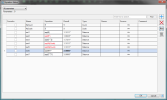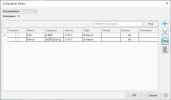Be especially careful to check the results of any functions too. This one was driving me mad less than a week ago:
Model display units were set to inches.
sqrt(9) = 1.1811" Wrong and no error displayed.
sqrt(9") = 1.8824" Wrong and error displayed "Dimensionality Not Valid".
sqrt(3"^2) = 1.7321" Wrong and no error displayed.
sqrt(MyScale) = 1.1811" Wrong and error displayed "Dimensionality Not Valid". MyScale was a scale value = 9
sqrt(MyCount) = 1.1811" Wrong and error displayed "Dimensionality Not Valid". MyCount was a count value = 9
sqrt(9)*1" = 3" Yields the correct answer but only after tricking Alibre Design to do it.
sqrt(3"*3") = 3" Yields the correct answer.

Now obviously I was not doing such simple square roots. These values were only to test after I discovered the error using different values.
I personally consider that a big bug.



